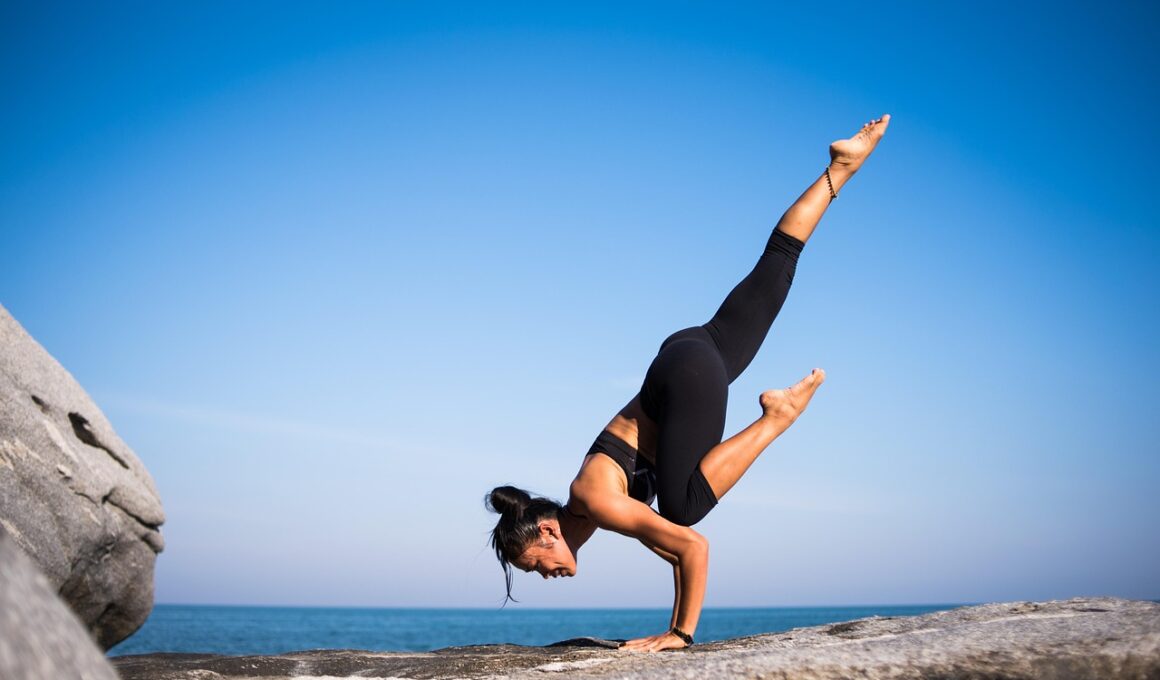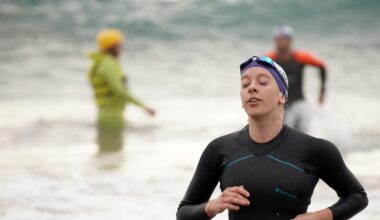Easy Flexibility Tests for Beginner Golfers
Golf flexibility is vital for enhancing performance and reducing injury risk. As a beginner golfer, understanding your body’s flexibility can initiate a comprehensive improvement journey. One of the main aspects to focus on is stretching, which increases the range of motion and allows for better swings. The fundamental flexibility tests include the toe touch, which assesses hamstring and lower back flexibility. Another essential test is the shoulder stretch, evaluating shoulder flexibility, a critical factor in the golf swing. Next, the seated straddle stretch aids in lower back and hip flexibility. Implementing these tests regularly can establish a baseline for your flexibility progress. Additionally, monitoring your results over time can motivate your development and adjustments in your training regimen. Incorporating these easy tests into your routine contributes to understanding how flexible you are at the start and how your body improves with practice. Therefore, engage in these tests enthusiastically and consistently for valuable insight into your physical capabilities in golf. Transform your flexibility journey into a rewarding experience as you advance in the world of golf with the right guidance.
Once you complete the essential flexibility tests, it’s paramount to analyze your results. Understanding what areas require improvement can significantly affect your golfing outcomes. The identified tight areas of your body can be focused on during stretching sessions to enhance flexibility over time. Furthermore, regularly practicing dynamic warm-ups will help to loosen your muscles before heading to the golf course. One effective warm-up exercise is the arm circles, which promotes flexibility in your shoulders and improves your swing mechanics. Additionally, integrating yoga into your routine is an excellent way to enhance overall flexibility, with poses that specifically target muscle groups used in golf. The downward-facing dog and pigeon pose help in opening up the hips while stretching those critical muscles. Not only does yoga increase flexibility, but it also fosters mental focus and relaxation, which are necessary for performing better on the course. Thus, embracing a holistic approach to flexibility training is vital for beginners. Remember to stay patient, as flexibility improvement is a gradual process that can bring remarkable benefits to your golf experience.
Dynamic Stretching and Its Benefits
Dynamic stretching is another effective method for improving flexibility, especially for golfers. Unlike static stretches, which are beneficial after play, dynamic stretches help warm up and prepare your muscles for activity. These stretches enhance blood flow, elevate core temperature, and increase the muscle’s elasticity. Examples of dynamic stretches include leg swings and torso rotations, which mimic the golf swing movement while activating the muscles involved. Incorporating these exercises into your routine can lead to a notable improvement in your overall range of motion. Not only do these stretches prepare you physically, but they also mentally prepare you for the game, allowing you to focus better. Also, by targeting the specific movements in golf, dynamic stretching provides specialized preparation that can lead to performance enhancement during your rounds. It’s vital to dedicate a few minutes to dynamic stretches before every round of golf, building consistency into your practice and ultimately reaping significant rewards. Dynamic stretching should become a staple in your pre-game preparation, setting the tone for an enjoyable and productive day on the course.
It’s essential to remember that flexibility training should be consistent over time to see significant improvements. Regularly scheduled stretching sessions within your practice regime can yield fruitful results, enhancing your ability to perform better on the golf course. Consider dedicating at least two to three days per week to focused flexibility work, ideally incorporating it into your routine. Stretching can also serve as an excellent cooldown after practice or games. Post-golf stretches not only aid recovery but also contribute to improved flexibility. Various resources are available online that advise on specific flexibility routines tailored to golfers. You can find articles and videos demonstrating effective stretches that align with your needs. Additionally, working with a golf fitness coach can provide targeted advice, ensuring that your training regimen is effective. They offer more personalized insights and develop a program based on your flexibility levels. Engaging with a qualified instructor allows for proper form and technique, preventing potential injuries. Therefore, don’t shy away from seeking assistance in your flexibility journey; it can lead to remarkable improvements in your golf game.
Setting Realistic Flexibility Goals
Setting realistic flexibility goals is crucial for your progress as a beginner golfer. Having specific, measurable targets helps keep you motivated and on track. Start by reflecting on your flexibility test results to define areas of improvement. For example, if you struggle with toe touches, aim to increase your reach by a set number of inches over time. Breaking down larger goals into smaller, achievable milestones can make the process less overwhelming, allowing for gradual progression. Celebrating these small victories can provide a motivational boost, reinforcing positive habits while maintaining excitement in your training. Additionally, experimenting with different stretching techniques can find what works best for your body. Consistency is key; aim for regular short sessions rather than less frequent, longer sessions. Keeping a flexibility journal allows you to track progress, noting improvements in specific stretches over time. This journal can serve as a powerful tool to reflect on your journey and keep you accountable. With realistic flexibility goals, you can develop a regimen that is both impactful and sustainable, making your golf practice more enjoyable and rewarding.
Incorporating flexibility training into your overall golf fitness approach can significantly impact your performance level. While flexibility is a core component, it should be combined with strength, endurance, and balance training for optimal results. Developing a well-rounded routine ensures that all muscle groups function efficiently, preventing injuries and enhancing your game. Look for programs that integrate flexibility with strength exercises like planks or bodyweight squats, yielding maximum benefits. Furthermore, focusing on your core stability through dedicated exercises can improve swing mechanics and control. Pilates is another exercise regime that enhances core strength while promoting flexibility as well. Many golfers have found this method beneficial to their overall fitness. Pairing strength workouts with flexibility sessions offers a balanced approach for beginners. However, it is essential not to overtrain; listen to your body and allow for recovery days to prevent soreness and injury. Moreover, remembering that progress takes time and being patient with your journey will provide invaluable benefits. By combining these aspects of fitness, you can watch as your golf performance improves, leading to lower scores and greater satisfaction on the course.
Finding Resources for Golf Flexibility
Many resources are available for beginners looking to enhance their golf flexibility training program. Websites and golf magazines often feature articles on specific flexibility exercises tailored for beginners. Many online platforms provide structured video tutorials that lead you through various stretching routines, making it easier to follow along. Engaging with these tutorials allows you to observe proper techniques while understanding the different muscle groups engaged. Moreover, you may find local golf courses or fitness centers offering golf fitness classes that emphasize flexibility training among other fitness aspects. Participating in these classes often creates a supportive community of fellow golfer enthusiasts eager to improve their flexibility together. Consider investing in books authored by golf fitness professionals, which delve deeper into specific flexibility techniques and training insights. Social media platforms also host numerous groups focused on golfing techniques, where you can share experiences and training routines with like-minded individuals. By connecting with other golfers or professionals, you can gather tips and inspiration for your flexibility journey. Utilize these various resources to foster your growth and keep your training fresh and invigorating, enhancing both your enjoyment and performance on the golf course.


